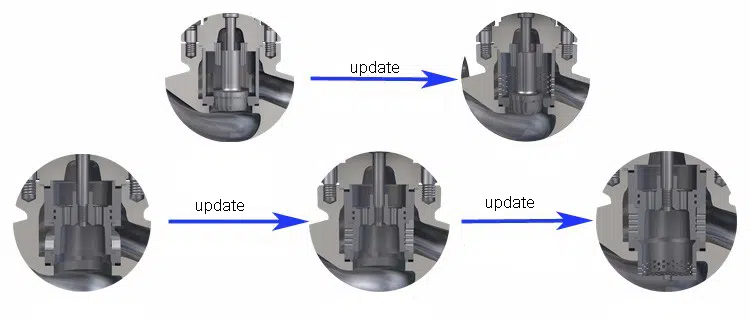FAQ
Frequently Asked Questions (FAQs) About Control Valve Applications
Control Valve Brief
The control valve is a key element in the process control loops, the main function of a control valve is to keep some important process parameters within a required operating range, such as inlet/outlet pressure, flow rate, temperature, or level, etc.
As a final control element to modulating gas, air, steam, water, or other fluid, the control valve will compensate for the load disturbance and maintain the regulated process variable as close as possible to the desired set point.
So it is really important to learn terminology, application, technology, and all information of control valves, no matter you are an engineering, sales, end-user, or instrument expert. COVNA engineer department made their professional effort and rich experience in the process industry to ensure the right technical information is shared.
Material Selection Factors
The following are list the general materials used for the control valve body. We will consider about 3 main factors that will affect valve materials selected for control valves. Properties, pressure, and temperature. Let’s discuss carefully one by one.
Properties Effects
Mechanical and Physical Properties
The most responsible valve manufacturers will provide the material mill test certificate for customers, which includes yield strength, hardness, and toughness data in mechanical and physical properties part.
Yield Strength is an important property of steel. It is defined as the stress at which 0.2% of the material has been permanently deformed. The higher the yield strength of the steel, the higher the resistance to permanent deformation.
Hardness is the property of resistance of a material to indentation. It is measured by the force needed to penetrate a sample of the material. Hardness can be measured using a variety of methods including Vickers hardness test, Rockwell hardness test, Brinell hardness test, and Knoop hardness test. These methods measure the hardness of materials based on their resistance to indentation. The hardness is often used to help us to estimate sliding wear resistance and resistance to erosion for control valves. It is important data if we select the right material for harsh conditions.
Toughness is the ability of a material to absorb energy and plastically deform without fracture.
Wear Properties
- Sliding Wear
- Erosive Wear
- Cavitation Wear
- Erosive wear is caused by high-velocity fluid impingement or erosive particles if flow medium.
Corrosion Properties
Corrosion properties definitely is an import index for control valves, and how to select the right material resistance to corrosion from the environment or medium fluid is always the main priority for engineers.
Pressure Effects
- Upstream Pressure
- Differential Pressure
- Pressure Drop

During the harsh conditions, we apparent will face cavitation, flashing, or erosion problems for control valves. A liquid generates cavitation or flash damage for control valves often caused by upstream pressure and differential pressure. A high differential pressure affects the high velocity of flow like steam, or entrained solids which caused the potential for erosion, and the corrosion caused by the passive layer of steel is washed away from the high velocity.
Temperature Effects
Temperature is a critical matter for yield strength under the same pressure. A high temperature of medium will highly reduce the yield strength of the control valve.
If the working temperatures exceed the limit temperature of a material, a phenomenon called “creep” will be caused.
What is the creep phenomenon for valves?
A simple phenomenon to show creep deformation, we see that many ball valve seat ring PTFE has creep deformation because it exceeds the limit pressure of the material, and after the temperature is back normal, the sealing can not tight off anymore. Same as control valves, when a high temperature affects the valve body and trim material into creep phenomenon, and even after temperature and pressure are removed, the steel material still can not goes back to its original dimension.

